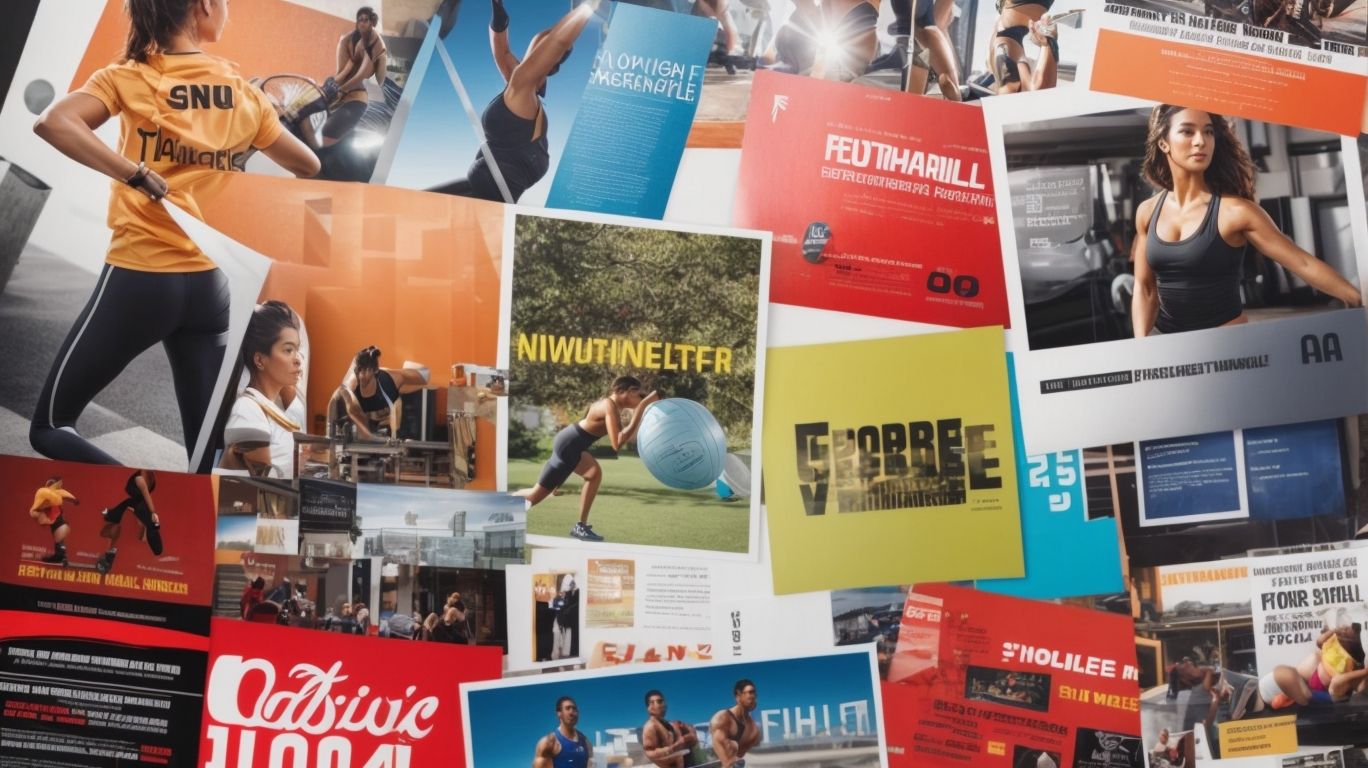
Behind the Success: An In-Depth Look at Fitness Marketing Campaigns That Worked
Looking to elevate your fitness marketing game?
We break down the key elements of successful fitness marketing campaigns and provide insights on how to identify your target audience.
Explore case studies of renowned brands like Nike, Peloton, and Planet Fitness to uncover what made their campaigns a hit.
Discover the secrets behind their success, including strong branding, social media tactics, and personalized messaging.
Get practical tips on creating your own effective fitness marketing campaign.
What Makes a Successful Fitness Marketing Campaign?
Creating a successful fitness marketing campaign requires a deep understanding of effective strategies and tactics to engage the audience and achieve desired results.
One crucial component of a successful fitness marketing campaign is developing a strong brand identity that resonates with the target audience. By establishing a unique and compelling brand image, fitness businesses can differentiate themselves from competitors and build a loyal following.
Utilizing social media platforms and targeted advertising can help reach a broader audience and drive engagement. Consistent and creative content creation, such as workout tips, motivational quotes, and success stories, can further foster connections with followers and enhance brand visibility in the saturated fitness market.
What are the Key Elements of a Successful Fitness Marketing Campaign?
Key elements of a successful fitness marketing campaign encompass a mix of effective tactics, strategic planning, and compelling messaging to drive engagement and conversions.
- These critical components are essential in forming the foundation of a triumphant marketing strategy.
- The execution of well-thought-out tactics ensures that your message reaches the right audience at the right time, maximizing impact and fostering brand growth.
- Strategic planning provides the roadmap for your campaign, guiding decision-making and resource allocation for optimal results.
- Compelling messaging is the glue that binds everything together, capturing the attention of potential clients and motivating them to take action towards a healthier lifestyle.
- When these elements align harmoniously, the stage is set for marketing success in the fitness industry.
How to Identify Your Target Audience for a Fitness Campaign?
Identifying your target audience for a fitness campaign involves thorough market research, data analysis, and metrics tracking to ensure precise targeting, engagement, and conversion optimization.
By understanding the demographics, interests, behaviors, and pain points of your potential customers, you can tailor your messaging and content to resonate with them effectively. Utilizing targeting strategies such as segmenting by age, gender, location, and fitness goals allows you to reach the right people at the right time.
Engaging your audience through interactive social media campaigns, personalized emails, and targeted ads can create a sense of community and connection. By measuring key metrics like conversion rates, click-through rates, and engagement levels, you can refine your strategies for maximum impact and return on investment.
Case Studies of Successful Fitness Marketing Campaigns
Exploring case studies of successful fitness marketing campaigns provides valuable insights into effective strategies, industry trends, and measurable results that drive campaign success.
These case studies showcase how fitness brands have leveraged innovative digital marketing techniques to reach their target audiences and drive engagement. By analyzing the campaign structures and execution strategies, one can glean valuable lessons on audience segmentation, content creation, and leveraging social media platforms effectively. These successful marketing endeavors have not only boosted brand awareness but also led to conversions and increased customer loyalty. Understanding the nuances of these case studies can empower marketers to craft data-driven, impactful campaigns in the competitive fitness industry.
Nike’s “Just Do It” Campaign
Nike’s iconic ‘Just Do It‘ campaign revolutionized fitness marketing with its bold branding, innovative promotion techniques, and widespread audience appeal.
The brand successfully blended emotional storytelling with powerful visuals, inspiring individuals to push their boundaries and embrace an active lifestyle. By leveraging high-profile athletes like Michael Jordan and Serena Williams, Nike associated its products with excellence and determination. The campaign’s tagline became a cultural catchphrase, resonating with consumers on a personal level. Nike’s strategic use of social media platforms further amplified its messaging, fostering a community of loyal supporters who identified with the brand’s values of empowerment and perseverance.
Peloton’s “Together We Go Far” Campaign
Peloton’s “Together We Go Far” campaign exemplified effective audience engagement through social media, fostering a sense of community and shared fitness goals.
The campaign’s success can be attributed to its strategic use of interactive social media elements, encouraging users to share their workout milestones, connect with fellow members, and participate in challenges. By creating a digital space where members could support and motivate one another, Peloton effectively transformed a simple exercise routine into a collaborative journey towards better health and wellness. This approach not only strengthened customer loyalty but also significantly increased audience participation and brand advocacy, showcasing the power of social media in building a thriving fitness community.
Planet Fitness’ “Judgement Free Zone” Campaign
Planet Fitness’ ‘Judgement Free Zone‘ campaign successfully cultivated customer loyalty by promoting a welcoming environment and building a strong brand identity based on inclusivity.
Through its consistent messaging and emphasis on creating a supportive fitness community, Planet Fitness has managed to establish a reputation as a gym that values acceptance and encouragement, making it a go-to destination for individuals seeking a non-intimidating workout experience.
By incorporating elements that prioritize making every individual feel comfortable and respected, the brand has effectively differentiated itself in a competitive industry, attracting and retaining loyal customers who appreciate the positive atmosphere fostered within its facilities.
What Made These Campaigns Successful?
The success of campaigns like Nike’s “Just Do It,” Peloton’s “Together We Go Far,” and Planet Fitness’ “Judgement Free Zone” can be attributed to strong branding, social media utilization, and resonant messaging.
- Effective branding plays a pivotal role in creating a lasting impression on the audience, ensuring that the company is recognized and remembered. By aligning their messaging with their core values and establishing a unique identity, these fitness brands have managed to stand out in a crowded market.
- Leveraging social media platforms to engage with their followers, share inspiring content, and facilitate community-building has been a game-changer, enabling them to connect with a wider audience and foster a sense of loyalty.
- Crafting impactful messages that resonate with consumers on a personal level has helped these campaigns forge emotional connections and evoke a strong response from their target demographic.
Strong Branding and Messaging
The foundation of successful fitness campaigns lies in the development of strong branding strategies, cohesive messaging, and the establishment of brand awareness among the target audience.
Crafting a branding strategy that resonates with the fitness industry’s values and target demographics is crucial for creating a memorable brand identity.
Consistent messaging across all marketing channels helps reinforce brand recognition and communicate key brand values effectively.
Implementing creative messaging tactics, such as storytelling, client testimonials, and social proof, can further enhance engagement with the audience.
Utilizing multiple platforms, including social media, email marketing, and influencer collaborations, is essential to boost brand awareness and reach a wider audience in the competitive fitness market.
Use of Social Media and Influencers
Leveraging social media platforms and influential figures plays a pivotal role in enhancing audience engagement, expanding reach, and implementing effective marketing strategies in the fitness industry.
By collaborating with popular fitness influencers, brands can effectively tap into their followers’ trust and loyalty, gaining credibility and visibility within the competitive landscape. These partnerships not only help in creating authentic content but also provide valuable exposure to a targeted audience.
In addition to influencer collaborations, utilizing engagement strategies such as interactive posts, user-generated content, and live sessions can further strengthen the brand’s online presence and foster a community of loyal customers.
Personalization and Inclusivity
The integration of personalization and inclusivity in fitness marketing campaigns resonates with consumer behavior, fosters brand loyalty, and creates a sense of community among diverse audiences.
By tailoring fitness offerings to individual preferences and diverse needs, brands can establish deeper connections with customers, driving long-term loyalty. Inclusivity in marketing efforts ensures that all individuals feel seen and valued, leading to a strong sense of belonging within the fitness community. Understanding consumer behavior insights allows brands to anticipate trends, preferences, and pain points, enabling them to deliver more personalized experiences that resonate with their target audience.
Tips for Creating Your Own Successful Fitness Marketing Campaign
Embarking on the journey to develop a successful fitness marketing campaign requires meticulous planning, engaging content creation, and a data-driven approach to optimize engagement and conversion rates.
When planning your fitness marketing campaign, it’s essential to conduct thorough audience research to understand their needs and preferences. Utilize this information to tailor your content and messaging to resonate with your target audience effectively.
Engage with your audience through interactive and personalized content that encourages participation and creates a sense of community. Implement conversion optimization techniques such as A/B testing to refine your strategies and maximize the effectiveness of your campaign.
By following these strategies, you can create a compelling fitness marketing campaign that resonates with your audience and drives conversions.
Know Your Brand and Target Audience
Understanding your brand identity, defining clear messaging, and conducting thorough market research are essential steps in connecting with the target audience and crafting compelling fitness marketing campaigns.
By establishing a strong brand identity, individuals can differentiate their fitness business in a crowded market. Clear messaging helps communicate the value proposition effectively, resonating with the target audience’s needs and aspirations.
Through in-depth market research, businesses can gain insights into consumer preferences, behaviors, and trends, enabling them to tailor their brand messaging to address specific pain points and desires. Aligning brand messaging with the target audience’s preferences is crucial for building trust and credibility, ultimately leading to increased engagement and loyalty.
Utilize Multiple Platforms and Strategies
Diversifying marketing channels, implementing audience segmentation, and enhancing outreach efforts across multiple platforms are key strategies to amplify the impact and reach of fitness marketing campaigns.
By leveraging various marketing channels, such as social media, email marketing, and influencer partnerships, fitness businesses can tap into different audiences and increase brand visibility. Audience segmentation allows for tailored messaging to specific demographics, ensuring that marketing efforts are targeted and personalized. Utilizing diverse platforms like fitness apps, podcasts, and online communities expands the reach of campaigns, engaging with potential clients in different online spaces and building a stronger online presence.
Be Authentic and Engaging
Authentic storytelling, engaging content creation, and fostering brand loyalty through genuine interactions are foundational elements that distinguish successful fitness marketing campaigns and resonate with audiences.
By weaving narratives that strike a chord with individuals’ personal fitness journeys, fitness brands can establish a deeper connection with their audience. Sharing real-life success stories, challenges overcome, and transformational experiences not only captivates attention but also instills trust and credibility. When brands prioritize authenticity in their storytelling, they create a sense of relatability that fosters long-term brand loyalty. This genuine engagement lays the groundwork for sustainable relationships that go beyond mere transactions, driving lasting impact and strong customer advocacy.




No Comments